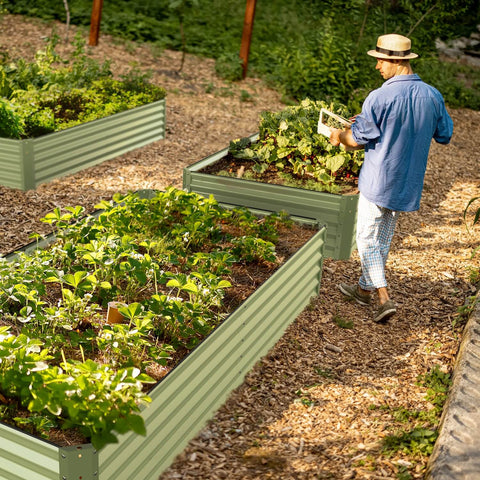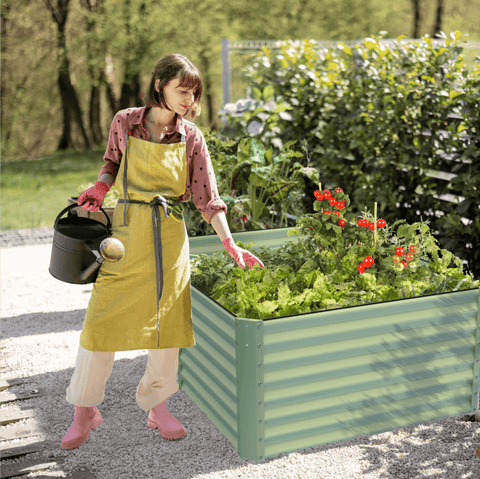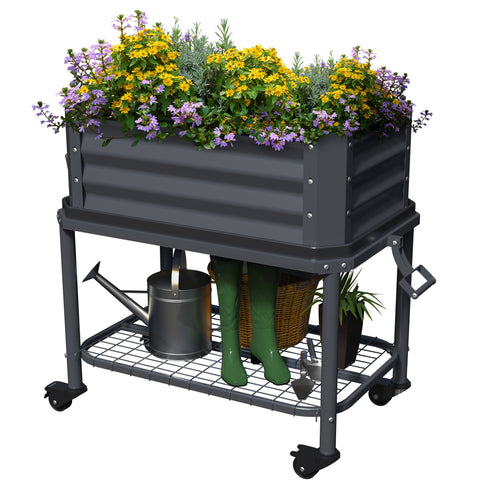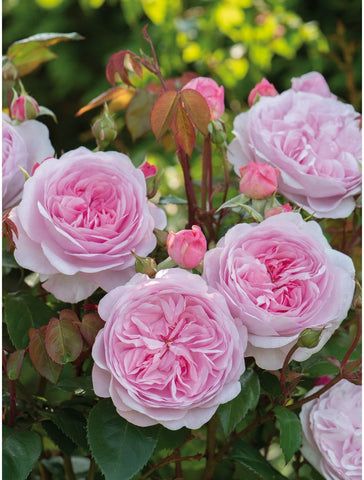Grow your own food in style to create unique and beautiful gardens that are both inviting and rich. Don't be surprised if you find yourself more eager to weed -- you won't want to leave your beautiful plot.The following content also has some reference value for raised garden beds.

- Bring fruits and herbs
Most people think of a vegetable garden as rows of lush green plants. But you can think outside the box - even if you're planting on a raised garden bed. With a little planning, you can grow edible plants with an appearance that rivals the beauty of any garden. While the garden is relatively modest, it includes mouthwatering fruits, vegetables and herbs - as well as flowers. It's hard not to be stunning.
- Pick the right place
The key to successful garden bed design is to make sure you have the right placement. Most vegetables grow best in full sunlight - at least eight hours of direct sunlight a day. No matter what kind of soil you have, your vegetables will thank you if you correct the ground with organic material (such as compost) before planting. Greenery will also be more abundant.
Here's a hint: Build your garden where you can easily reach it. Harvesting fresh fruits, vegetables, and herbs will reduce the burden if you can dash out quickly to get what you need (especially when you're cooking) instead of having to trek across the yard.
How to make compost step by step to enrich your garden

Step 3 Make an appearance
Make your garden noticeable. Here, a towering white gazebo is decorated with climbing roses. While these flowers are a classic choice for trees, you can choose any plant - from decorative clematis or morning glory to edible red beans or kiwi - to beautify your vegetable garden.
20 gorgeous garden arboreal ideas for a charming outdoor space
- Only add flowers
Why have a separate garden when you can grow them with vegetables? Flowers, especially those in the Daisy family, attract beneficial insects that attack and kill pests such as tomato hornworms or aphids. Other useful insects pollinate fruits and vegetables, such as tomatoes, eggplants, peppers, cucumbers, pumpkins and melons, so you'll have a bigger harvest. Better yet, choose plants with edible flowers so they are both food and eye candy.
- Protect your plants
If hungry deer, rabbits, or other animals haunt your garden, protect your plants so that pests don't harvest more than you do. On this small plot of land, 3-foot-high chicken wire is attached to surrounding posts to keep small animals out of the vegetable garden. Keep in mind that if rabbits, gophers, or other burrowing animals are a problem, your chicken wire fence needs to extend at least a foot below the ground to prevent animals from burrowing underneath.
- Grow up on a raised bed
If you need motivation to build an elevated bed, consider these benefits for your vegetable garden: You can fill the elevated planting space with any type of soil you want (an advantage if your ground is filled with clay, sand, or rocks). Raised beds will warm up earlier in the spring so you can be prepared in advance of planting season. And, if you build the box 3 to 4 feet wide - so you can easily reach from the sides to the middle - you'll never tread on the soil tightly.

- Think like a designer
Say this three times quickly so you remember: repetition is the key to unity. The garden is a good example of garden design principles: the bright red poppies echo the rounded fruits of the tomatoes. The climbing rose in the tree resembles the orange gorse and golden lotus in the far corner. The warm through-lines make the classification of plants feel arbitrary.
- Grow in containers
Add containers of edible plants to your vegetable garden design -- or on patios and terraces -- to expand your growing space. In these galvanized tubs, green and dark red lettuce are arranged alternately in stark contrast. Evergreen strawberries can also be placed in POTS or hanging baskets; The red fruit hangs on the edge, looking inviting and easy to harvest. For more visual pleasure, choose colorful containers for your plants.
How to grow delicious strawberries that taste better than store-bought ones

- Make sure you have mulch
Mulch isn't just decorative -- it makes your vegetable garden easier to maintain. An inch or two of mulch will help your soil retain moisture in hot, dry weather and keep most weeds from sprouting. In addition, mulch prevents many soil-borne diseases from splashing onto plant leaves and infecting them. Put a layer on your path, too, so you don't get your feet dirty when you're in the garden.
How do you choose the best type of mulch for your landscape
- Pick a pretty variety
Flowers aren't the only way to add color to your garden design -- many vegetables will do, too. For example, the Swiss chard shown here adds a splash of color to the bed. Other attractive vegetables include eggplant, red cabbage, purple kohlrabi, and red-leaf lettuce. Different tomato and pepper fruit colors are red, orange, yellow, cream, purple, and green. Many herbs, including thyme, chives, and parsley, can enhance the beauty of your vegetable garden landscape.
- Bring the birds
Experienced gardeners know the value of attracting birds to their gardens. Many common species, including Robins, mockingbirds, wrens and warblers, eat harmful insects. Put a water source in your garden to attract your feathered friends to visit. Here, a simple bird-water basin sits among the herbs and attracts them. Birds will also appreciate having shelter nearby, so plant a shrub or small tree near the garden if you can.

14 of the best bird baths in a stylish, bird-friendly garden
- Add decorations
Use garden decorations -- from bird cages to statues -- to decorate your growing space. Whatever suits your personal style is fine. This rustic bird house adds vertical interest while also providing a habitat for birds.









